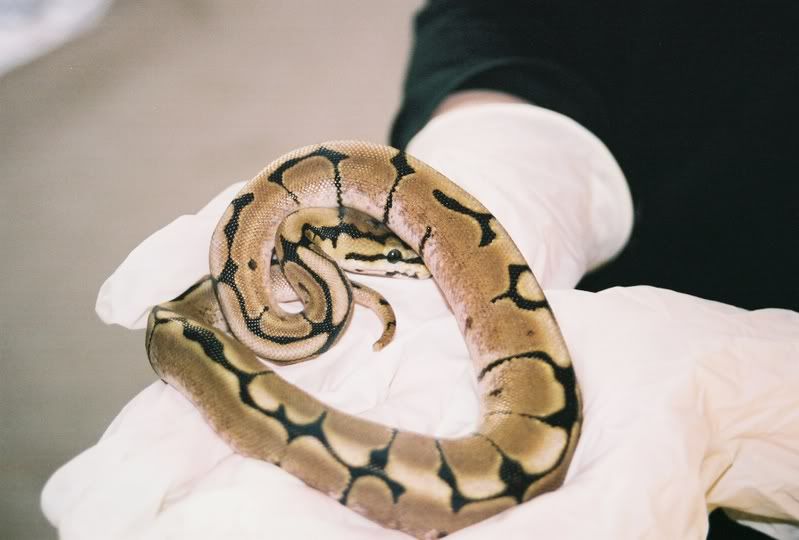This is Mr. Wibbles:


Mr. Wibbles is also a unique project for me because he has a condition unofficially known as "wobble head." Sometimes this condition is called "the spins." A wobble-head (or "wobbler," from here on out) seems to lack a developed sense of equilibrium and will exhibit the following symptoms:
- The snake will frequently hold its head sideways.
- The snake may crawl around at odd angles or upside down.
- The snake won't immediately right itself when turned upside down (and will sometimes sleep upside down).
- The snake's head will wobble like a small branch in a breeze. In severe cases it may shake.
- The snake may crawl around in loops or circles.
- The snake may have difficulty striking target prey.
Little is known for certain about this condition except that it appears to be related to the gene that gives spider morphs their appearance. There is some anecdotal evidence which suggests that the condition is more common in spiders who exhibit brighter colors, or whose signature spider pattern is more striking than that of others of the same morph, but no studies have been done and the correlation is not well documented. Spider ball pythons can produce offspring without the condition, and vice versa. It is not yet known whether spiders, when bred to ball pythons with co-dominant genes (such as the "pastel" gene) to create designer morphs, will produce wobbler offspring.
The degree to which symptoms manifest differ from snake to snake. Some breeders insist that wobblers can outgrow the condition, and some owners have written in herpetocultural forums that their own wobbler spiders have done just that. Other breeders believe that it is a life-long condition.
Mr. Wibbles' symptoms are less severe than some I have seen in photographs online. He does have trouble with his equilibrium and is slow to right himself, he does have a tendency to weave sideways from time to time, and he's not what you'd call a good shot when it comes to striking his prey. However, he spends most of the day right-side-up, moves deliberately to thermoregulate, and does manage to hit the prey more often than not, although grabbing the prey when he hits it is another matter entirely. Most significantly, he does not spend hours doing torturous and apparently painful loops and spins like some spiders that have the condition have been known to do.
I will use this blog to share my observations about Mr. Wibbles as he grows. I will publish his weight, feeding habits, defecation, and sheds. I will post pictures here as well as links to any video that I take to show his behaviors. I will also post links to any information I find about wobblers. My hope is that others may use the information published here to make informed decisions about whether to acquire and even breed spider morphs, given the potential risks.
Stay tuned.

No comments:
Post a Comment